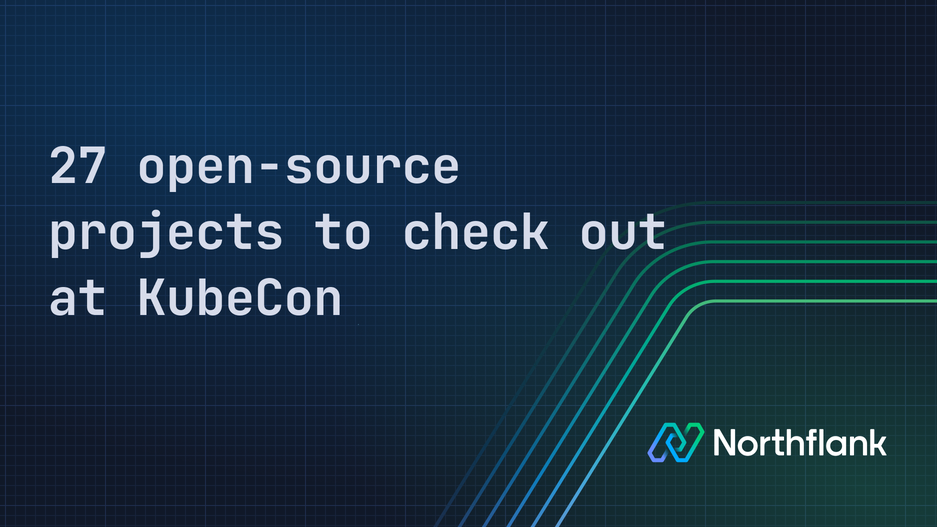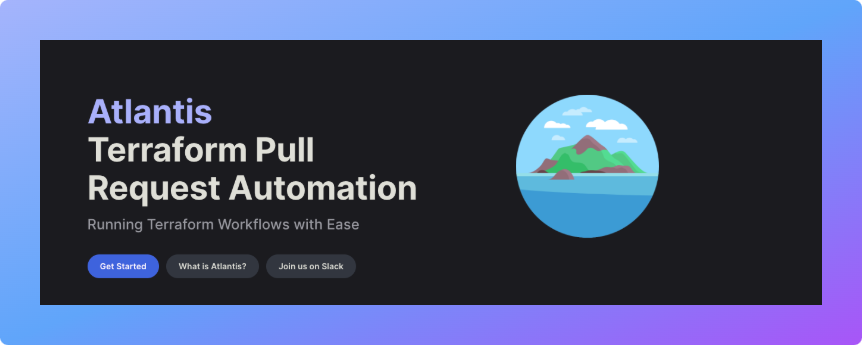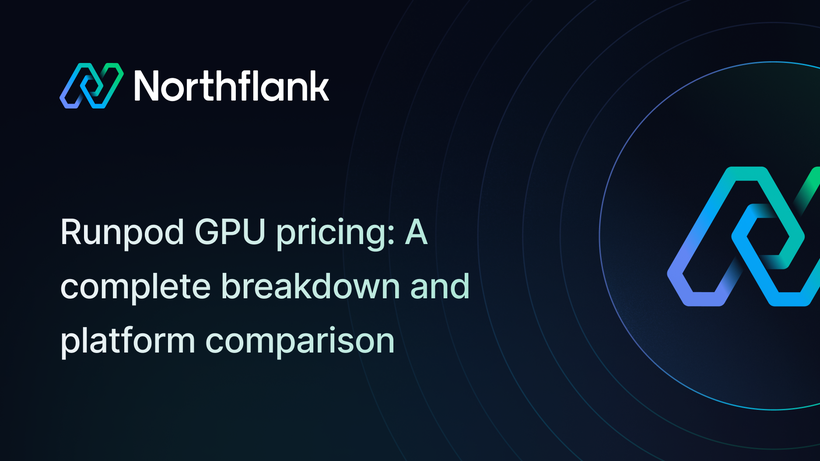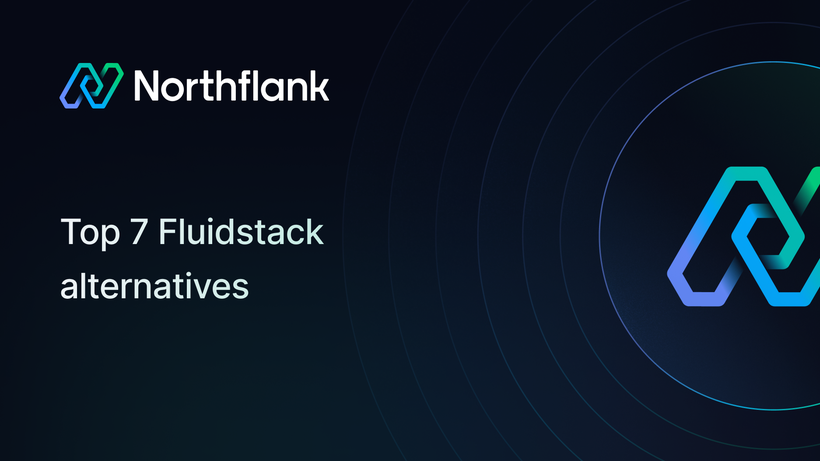

KubeCon Europe London 2025 – 27 open-source projects you should check out
If you’re going to KubeCon 2025, you’re probably looking for more than just keynotes and free swag. You want to see what’s new, what’s solving real problems in platform engineering, and which tools are making Kubernetes more effective. If that’s you, here’s a look at some top open-source tools worth checking out—each built to address real challenges in cloud-native environments.
Kubernetes is powerful, but managing production workloads takes more than just the core platform. From building and deploying apps to security, networking, supply chain inventory, and scaling, the right tools can either add complexity or make everything run smoothly. The projects below aren’t just hype—they’re solving real problems for platform teams, whether it’s automating deployments, securing the software supply chain, or managing data across clusters.
At Northflank, we’re all about simplifying and making Kubernetes more efficient for engineering teams. We’ve helped companies like Sentry, Writer, and Weights—along with thousands of developers and platform teams worldwide—streamline their workflows, automate deployments, and get the most out of their cloud infrastructure.
We put this list together because we know firsthand how the right tools can transform how teams build and ship software. Whether you're scaling a startup or managing complex enterprise workloads, these open-source projects can help you solve real problems and move faster with Kubernetes.
Northflank wouldn’t be possible without the incredible open-source ecosystem. We rely on projects like Kata Containers, Cloud Hypervisor, Istio, Cilium, and Ceph to power our platform. Where we can, we contribute upstream to help improve these tools and support the broader community.
Looking to simplify Kubernetes for your team? Try Northflank and see how we can help you build, deploy, and scale easily.
Shipwright (shipwright.io)
Shipwright makes building container images simple and Kubernetes-native. It lets you define, run, and scale image builds directly in your cluster, making it a great fit for teams integrating builds into their CI/CD pipelines.

Stacker (stackerbuild.io/v1.0.0/)
Stacker provides a secure, unprivileged way to build OCI-compliant container images. If security is a concern in your image builds, Stacker helps you build safely without added complexity.(Take out)

Atlantis (runatlantis.io)
Managing Terraform workflows can be tricky, but Atlantis simplifies collaboration by automating Terraform pull requests. It helps platform teams streamline infrastructure changes while reducing manual errors.(Take out)

KitOps (kitops.org)
For AI/ML teams, KitOps packages models, code, and data into reproducible artifacts. It ensures AI projects are as easy to deploy and manage as containerized apps.

Koordinator (koordinator.sh)
Koordinator is all about optimizing Kubernetes resource scheduling and management. It helps you squeeze the best performance out of your clusters by intelligently managing workloads—a must-have when every CPU cycle counts.

KubeSlice (kubeslice.io)
Multi-cluster management can get messy fast. KubeSlice simplifies connectivity and security across clusters, making it easier to orchestrate services in a distributed environment without the headache of traditional networking challenges.

Kubean (kubean-io.github.io/kubean/en/)
Kubean leverages the power of Ansible to automate Kubernetes cluster management. It’s ideal for teams that love the flexibility of Ansible and want to extend that into their Kubernetes operations—keeping your clusters consistent and reliable.

KusionStack (github.com/KusionStack/kusion)
Think of KusionStack as a programmable infrastructure. It allows you to define and manage your infrastructure as code with a high-level language, reducing the friction of manual configurations and paving the way for faster, error-free deployments.

hami (project-hami.github.io/HAMi/)
High availability is non-negotiable in production. hami focuses on ensuring that your Kubernetes clusters are resilient, automating failover and recovery processes so you can keep your services running smoothly—even when the unexpected happens.

Kairos (kairos.io)
Edge computing is more than a buzzword—it’s the future. Kairos brings Kubernetes to the edge, offering immutable, self-healing nodes that are ideal for remote or resource-constrained environments. For platform engineers pushing workloads to the edge, Kairos is a must-see.

LoxiLB (loxilb.io)
When it comes to high-performance load balancing, LoxiLB is your go-to solution. Designed for Kubernetes, it delivers low latency and high throughput, ensuring that traffic is routed efficiently even in the busiest environments.

OVN-Kubernetes (ovn-kubernetes.io)
Networking in Kubernetes can be a labyrinth, but OVN-Kubernetes brings clarity with its advanced virtual networking features. It simplifies the creation and management of secure, isolated networks within your cluster.

Connect RPC (connectrpc.com)
Building microservices often means dealing with complex communication protocols. Connect RPC offers a language-agnostic framework for remote procedure calls, making inter-service communication straightforward and reliable.
Kuadrant (kuadrant.io)
APIs are the backbone of modern applications. Kuadrant provides robust API management for Kubernetes, helping you secure, observe, and control API traffic in a scalable way—ideal for teams integrating multiple services.

Sermant (sermant.io/zh/)
Service meshes are becoming essential for managing microservices at scale. Sermant enhances observability, security, and traffic management within your Kubernetes environment, making deploying, monitoring, and securing your services easier.

kGateway (kgateway.dev)
API gateways are critical for routing and securing traffic. kGateway is a lightweight, Kubernetes-native API gateway that simplifies the exposure and management of APIs, ensuring that your services remain accessible and secure.

Bank-Vaults (bank-vaults.dev)
Managing secrets in a dynamic environment is challenging. Bank-Vaults automates the initialization, unsealing, and configuration of HashiCorp Vault, giving you a secure way to manage secrets and protect sensitive data.

Ratify (ratify.dev)
In today’s supply chain security landscape, ensuring the integrity of your container images is vital. Ratify validates image signatures and attestations, providing an extra layer of trust in your deployment pipelines.

OSCAL-COMPASS (github.com/oscal-compass/community)
Compliance doesn’t have to be a chore. OSCAL-COMPASS leverages the Open Security Controls Assessment Language (OSCAL) to streamline security assessments and compliance reporting, helping you stay audit-ready without the usual headaches.
Cartography (cartography-cncf.github.io/cartography/)
Visualizing your infrastructure can reveal hidden vulnerabilities and misconfigurations. Cartography maps out your assets and their relationships, providing an insightful overview that aids in security audits and operational management.

bpfman (bpfman.io/v0.5.6/)
For those looking to harness the power of eBPF, bpfman is a handy tool. It simplifies the management of eBPF programs, enabling dynamic loading and unloading that can enhance observability and performance monitoring in your clusters.

openGemini (opengemini.org)
When monitoring performance and scaling analytics, a robust time-series database is indispensable. openGemini is built for high-performance, large-scale monitoring, making it ideal for tracking metrics in complex environments.

OpenEBS (openebs.io)
Stateful applications demand reliable storage. OpenEBS provides containerized block storage solutions that integrate seamlessly with Kubernetes, ensuring your stateful workloads are supported with high-performance, persistent storage.

Kmesh (kmesh.net/en/)
Data orchestration can be the difference between a sluggish application and one that scales effortlessly. Kmesh is designed to facilitate seamless data mobility across hybrid and multi-cloud environments, ensuring that your data is consistent, accessible, and secure.

youki (youki-dev.github.io/youki/)
Performance and security start at the runtime. youki is a container runtime written in Rust that emphasizes efficiency and compliance with OCI standards, ensuring your containerized applications run smoothly and securely.

Hyperlight (github.com/hyperlight-dev/hyperlight)
Imagine a virtual machine manager that is lightweight and can be embedded directly within your applications. Hyperlight pushes the boundaries of performance, offering near-zero overhead for running untrusted code safely—a visionary tool for the future of cloud-native execution.

Interlink (intertwin-eu.github.io/interLink/)
Integration is key in today’s heterogeneous environments. Interlink focuses on bridging systems and facilitating seamless communication between disparate services. It’s the glue that holds modern, polyglot architectures together.

KubeCon 2025 is packed with innovations that can change how we build, deploy, and manage cloud-native infrastructure. Whether you're improving build pipelines, managing clusters, strengthening security, or optimizing data orchestration, these tools offer real solutions to real challenges.
As you explore the expo or join virtual sessions, keep an eye on these projects—they’re not just concepts but actively solving everyday problems for platform teams. Let us know which ones catch your interest and how they could impact your work.
Enjoy KubeCon 2025!



